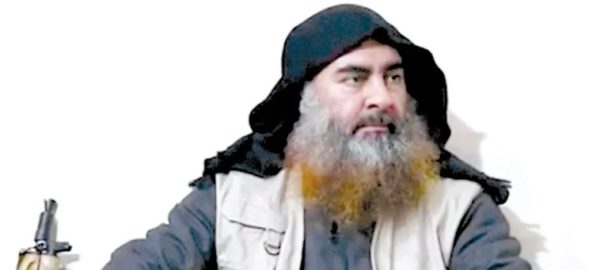Some major US cities have recorded staggering increases in homicides in the first six months of 2020, if compared with the same period in 2019: some increases range from 25% (Philadelphia) to 85% (Minneapolis). This trend is bringing to light a public safety crisis, revealed by a long-term increase in the number of gang-related recorded shootings and reduction of proactive-policing. Continue reading
Tag Archives: USA
U.S. riots and police brutality: responding to a homeland security threat – by Maria Chr. Alvanou
Throughout the U.S. there is turmoil due to the death of George Floyd, attributed to the murderous act of a police officer, already arrested and charged. Reactions have ranged from peaceful demonstrations to serious riots in several cities. Events like burning down police stations and vehicles, as well as vandalisms, looting, clashes with law enforcement, etc have created the background for violence connected with further loss of lives. Continue reading
Indovina chi? L’identità del capo del gruppo suprematista The Base è nota – by Barbara Lucini
A seguito di una inchiesta del The Guardian, è stata resa nota pochi giorni fa, l’identità del fondatore e capo di The Base, gruppo suprematista bianco attivo in USA da Luglio 2018 circa. Continue reading
L’Iran dopo Soleimani. Sguardi retrospettivi e dinamiche di sicurezza – by Diego Bolchini
Con specifico riferimento alla lotta contro IS, in senso retrospettivo, l’Iran ha giocato un ruolo chiave in ambito siro-iracheno (il c.d. Syrak) attraverso una azione multiforme, incrementando la sua capacità expeditionary. Continue reading
La morte di Al-Baghdadi: prime considerazioni – by Marco Lombardi
Questa mattina gli americani ci informano della morte del leader di Daesh, Al-Baghdadi. Il Califfo si sarebbe fatto saltare in aria attivando la cintura da suicida che portava, morendo insieme a un paio di mogli quando scovato dalla operazione delle forze speciali del Delta Team americano. In totale 9 morti durante l’assalto al compound dove si trovava a Barisha, in provincia di Idlib, a 5 chilometri dal confine turco. Continue reading
Event Safety and Security Risk Update: Stampedes, or Crowd Surge/Rush – By Peter Ashwin and Giovanni Pisapia
“Panic and confusion erupted in Central Park on Saturday night (the 29th September 2018), after a loud noise frightened concertgoers at the Global Citizen Festival, with some people erroneously attributing the sound to gunshots. Witnesses described a near-stampede in some places, as people sprinted for cover, jumped fences and trampled one another. Some were in tears and called their loved ones, and others said they had lost items or gotten separated from their friends, according to social medial. But the police quickly refuted reports of a shooting, saying at first that the noise was from a fallen barrier, not gunshots” (Sarah Mervosh, 2018). Continue reading
9/11 remembrance: research reflections for security – by Maria Alvanou
The first years after the 9/11 attack were used to wage war against Al Qaeda in what seemed to be a US affair. Soon it became evident that Europe was also under threat and while european countries never adopted a direct, clear military approach to countering terrorism, they did take measures and adopted polices that challenged longstanding principles of human rights and liberties. Continue reading
Armi da fuoco fai-da-te: un futuro vicino? – by Gabriele Mori
“Domattina il sole brillerà, gli ucelli canteranno e chiunque sarà in grado di scaricare legalmente istruzioni per stampare in 3D un arma di plastica integralmente funzionante, incluso un AR-15, un’arma da guerra: cosa mai potrà andare storto?” Continue reading
Base USAF: auto bomba esplode all’ingresso. Chi bussa? – by Daniele Plebani
Un’automobile, il giorno 21 marzo 2018 alle ore 19:00, carica di bombole di gas propano si è lanciata contro l’ingresso principale della Travis Air Force Base in Fairfield, in Northern Carolina. Il guidatore, morto nell’attacco, ha deliberatamente innescato l’esplosione. La base USAF ospita circa 10.000 persone e la sua operatività è di supporto alle operazioni nel pacifico con cargo e trasporti. L’FBI sta trattando l’episodio come un caso di terrorismo, a causa della volontarietà dell’atto suicida. Continue reading
New York e terroristi Uzbechi nel quadro del jihadismo dell’ex Urss – by Giovanni Giacalone
L’attentato di Halloween a New York torna a far parlare ancora una volta del pericolo proveniente da jihadisti originari di paesi ex membri di quella che era una volta l’Unione Sovietica. L’attentatore, identificato come l’uzbeko Sayfullo Saipov, era giunto negli USA nel 2010 dopo aver vinto la “green card” alla lotteria che ogni anno mette a disposizione 55.000 permessi. Continue reading
Las Vegas 58 morti: la micidiale guerra della comunicazione continua a colpire – by Marco Lombardi
Las Vegas 58 morti: la micidiale guerra della comunicazione continua a colpire, in maniera drammatica perché in suoi proiettili generano sempre più incertezza, quando invece comprendere lucidamente le caratteristiche del nemico è fondamentale. Continue reading
The Charlotte social unrest violence: Why islamist terrorism is not the sole security threat – By Maria Alvanou
Since the attack of September 11, the U.S. took the lead in the struggle against terrorism. They did so dealing with it in the context of “war against enemies of the nation”, so that american citizens are protected from “external” threats that challenge the security of the country. This line of response set standards (legal, military, and police) that affected counterterrorism strategy globally. Yet it is not terrorist attacks, but social unrest violence that has been challenging seriously and repeatedly the domestic security of the country. Killings of members of the African American community by the police, as well as more generally the phenomenon of police brutality in relation to racial prejudice[1] have been the background for serious protests, violent riots, even “revenge shootings”[2]. Continue reading





